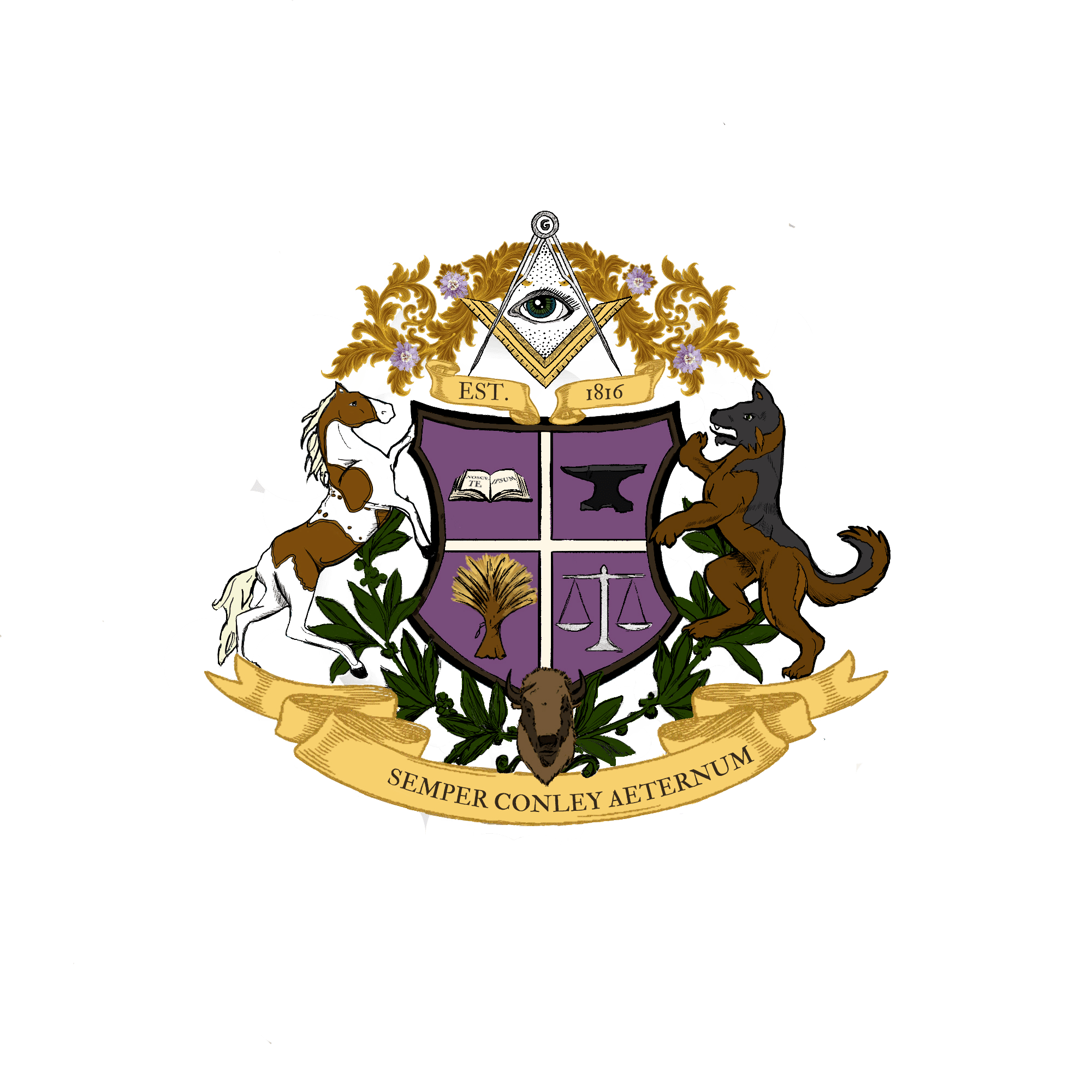1820-1840: The Conley Brothers
James Conley managed the construction of the stables, and subsequently their overall maintenance. As stable master, he also was responsible for the appearance of the vast horse facility, which in the era following the War of 1812 including substantial landscaping, flower arrangements, shrubbery, and painted signage. Most significantly, James held responsibility for the boarding of the horses for the Green Bottom’s notable guests, including training, feeding, shoeing, Lastly, he was responsible for the stable’s expense accounts and payroll.
All of these tasks and responsibilities for which James was responsible would be assigned to his sons: Washington, Felix, James, John, Paschal, William and Hamilton. Upon the death of James’ father, John Oldham Connally, the sons would deploy their extensive training and quality craftsmanship in a series of small business which provided the broader family with prosperity for generations.
A FAMILY EMERGES
Because James was a stage coach driver, then stable master, his children acquired valuable vocational training that would enable them to prosper later. Due to their parents’ livelihoods on the Green Bottom resort property, the children enjoyed relative privilege, spared the cruelties of work in the fields and forests. In a form of indentured servitude, all the children of James and his wife Jane worked at their grandfather John Connally’s equestrian resort. Each child learned a trade required for their duties at the facility, until John Oldham Connally died in 1845. Those skills, and the behaviors required for those trades, would shape the personalities of each child, and determine the fates of future generations for the next 200 years.
GREEN CONLEY JOINS THE FAMILY
Green was the son of an entirely different James Conley - a merchant-trader from New Jersey believed to have been from Scotland. This Scottish James Conley was of no relation to the Connally family his son Green would marry into in Alabama.
James travelled frequently to Augusta, Georgia, once a British military fort, for business, and enjoyed the ‘left handed marriages’ with women of color in the unusual atmosphere that flourished in Augusta following the War of 1812. During that brief war with England, the British military promised any slave or servant their freedom in exchange for helping maintain the military compound. Hundreds of people of color fled their plantations and made their way to the fort. Many were girls and women were trained as seamstress who made, repaired and washed uniforms. Others prepared food for the British soldiers. At war’s end, most found themselves in the odd circumstance of being legal free, but bound to the geographic area close to the former fort, lest they be recaptured and sent back into slavery. Augusta emerged as a powerful trading post with Europe and Latin America. Many of the women would become consorts and concubines for traders from Boston, New York, Baltimore, and Europe.
In Augusta, James Conley had two illegitimate sons with two different women, Benjamin (born 1815) and Green (born 1816). Benjamin F. Conley became a grocer at 14 years old, and eventually mayor of Augusta, Georgia (1857-1859), State Senator, and in 1871, the provisional governor of Georgia during Reconstruction after the Civil War. Green became used the methodist church to learn to read, then trined as a stone mason, and joined the great migration out of Georgia to the newly created state of Alabama during a land grab.
After Alabama secured statehood in 1820 thousands of southerners from Virginia, Georgia, and the Carolinas had settled in what would become Alabama. Family lore has it that Green arrived in Huntsville with the economic expansion from mid-1834 to mid-1836. The prices of land, cotton, and slaves rose sharply in those years, driving many in Georgia to search for less expensive land in Alabama. The state’s population increased almost 500%. Green arrived just as the Depression of 1837 shocked the stability of the Green Bottom Inn & Racetrack.
It was common for merchants and landowners of the period to keep mistresses, concubines, and liaisons with priveliged women from other landholding families. These relationships often produced children.
Augusta was unusual for the sheer number of such interracial liaisons. The unique environment produced not only Green Conley, but also William White (founder of Morehouse College) and John Hope (President of Morehouse College).
Wealthy Planter-Class wives of landowners and traders complained that about the offspring with Colored women. Mary Chestnut’s musing were merely formally published in book form. She famously wrote in her Civil War Diaries: “Our men seem to think themselves,…models of husbands and fathers. But in reality, like the patriarchs of old, they all live in one house with their wives and concubines. The mulattoes one sees I EVERY family exactly resemble the white children. Any lady is ready to tell you who is the father of all the mulatto children in everybody's household but her own. Those, she seems to think, drop from the clouds.” While there is no actual documentary proof of adultery throughout the period Antebellum South. There were stories abound.




